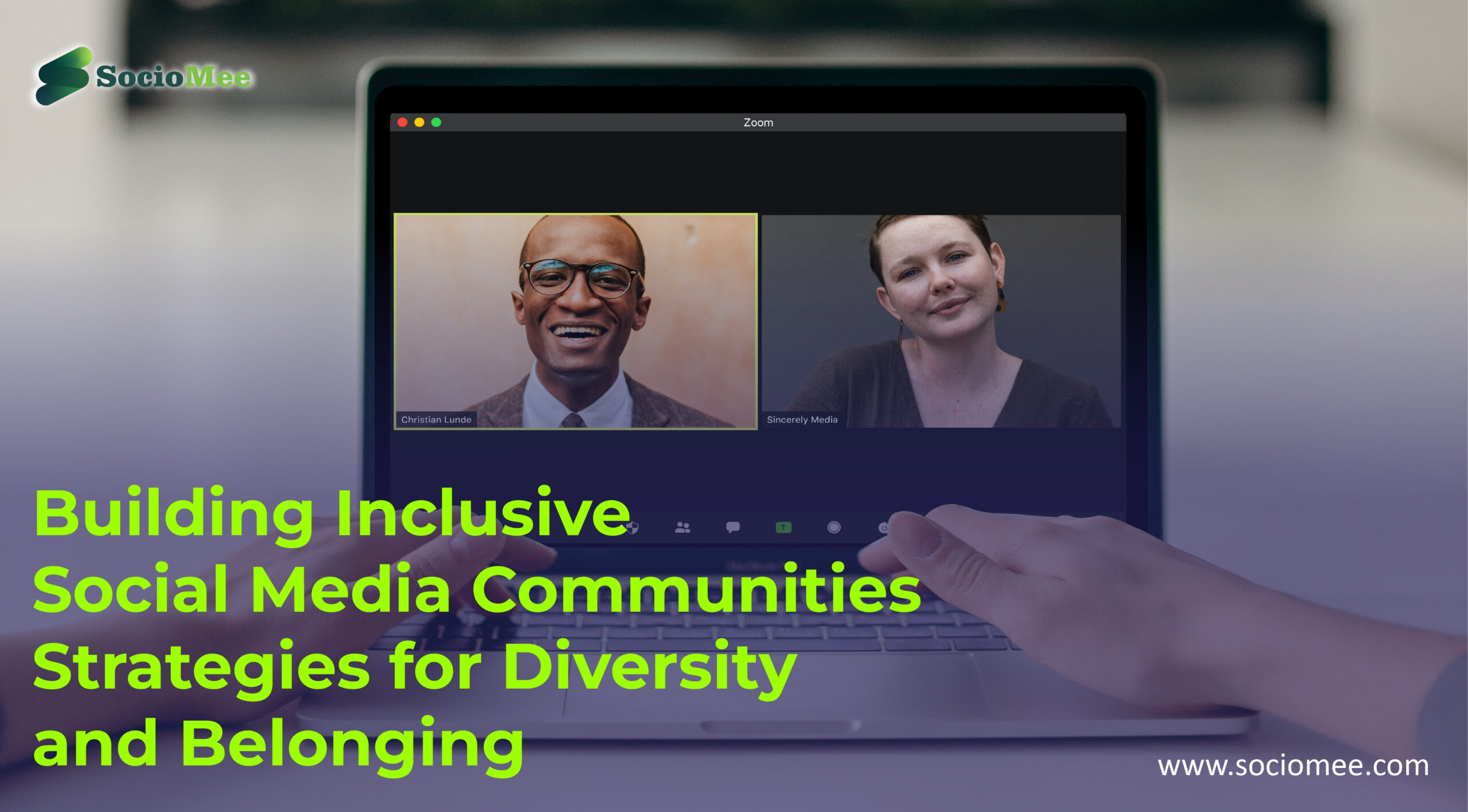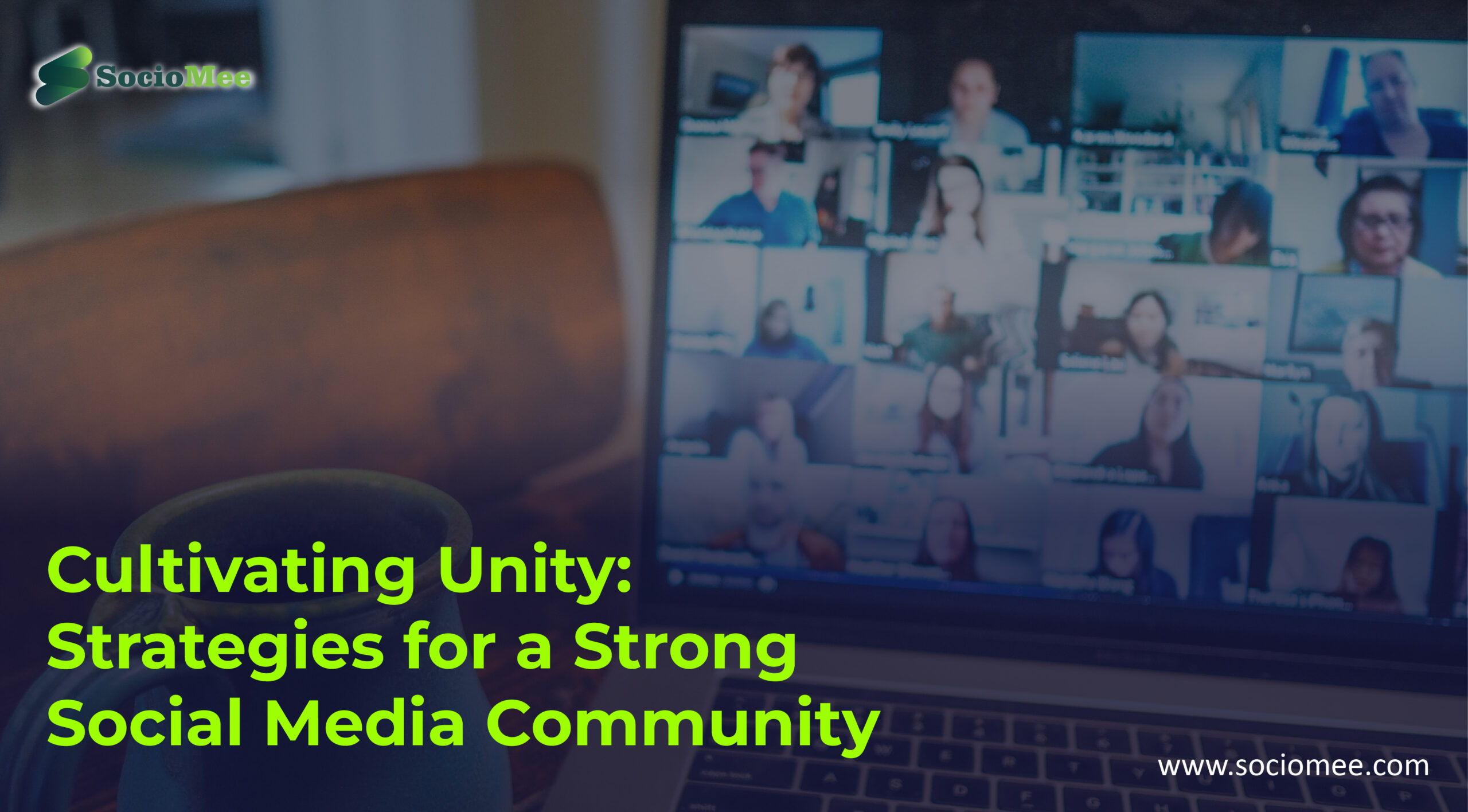In the dynamic and interconnected world of social media, fostering inclusive communities is not just a trend; it’s a necessity. A diverse and inclusive online environment not only enriches user experiences but also contributes to the overall success and longevity of social media platforms. In this article, we’ll explore strategies to build inclusive social media communities, emphasizing the importance of diversity and a sense of belonging.
#1. Key challenges to build an inclusive social media community
Building an inclusive social media community is a noble endeavor, but it comes with its share of challenges. Addressing these challenges is crucial for fostering diversity and belonging. Here are key challenges to inclusivity on social media and strategies to overcome them:
Challenge
Online spaces can be breeding grounds for harassment and discrimination, creating a hostile environment for certain groups.
Strategy
Implement robust community guidelines that explicitly condemn harassment and discrimination. Empower moderators to enforce these guidelines promptly and consistently. Utilize AI tools for content moderation to identify and address harmful content swiftly.
Echo Chambers and Filter Bubbles
Challenge: Users may be exposed only to content and perspectives that align with their existing beliefs, creating echo chambers and filter bubbles.
Strategy: Encourage diverse content creation and consumption. Use algorithms that present users with a variety of perspectives to break echo chambers. Highlight content from diverse creators and communities to foster a richer, more varied experience.
Lack of Representation
Challenge: Certain groups may feel underrepresented, leading to feelings of exclusion and a lack of belonging.
Strategy: Actively seek out and feature content from underrepresented groups. Collaborate with diverse influencers and creators. Ensure that marketing and promotional materials showcase a wide range of voices. Create initiatives to support and promote content creators from marginalized communities.
Language and Cultural Barriers
Challenge: Language differences and cultural nuances can lead to misunderstandings and exclusion.
Strategy: Implement multilingual support to accommodate users from different linguistic backgrounds. Provide clear and culturally sensitive communication. Encourage the use of subtitles, translations, or alternative formats for content to ensure accessibility.
Accessibility Issues
Challenge: Social media platforms may not be accessible to individuals with disabilities, limiting their participation.
Strategy: Prioritize accessibility features, such as alt text for images, closed captioning for videos, and compatibility with screen readers. Regularly conduct accessibility audits to identify and address any barriers. Engage with the disabled community to gather feedback and improve accessibility continuously.
Unconscious Bias in Algorithms
Challenge: Algorithms powering social media platforms may unintentionally perpetuate biases, leading to unequal exposure and opportunities.
Strategy: Regularly audit and fine-tune algorithms to minimize biases. Ensure diversity in the development and testing teams to mitigate unconscious biases. Be transparent about algorithmic decision-making and involve the community in discussions about improvements.
Resistance to Change
Challenge: Resistance from existing community members to changes aimed at promoting inclusivity.
Strategy: Communicate openly about the reasons behind changes and the benefits they bring to the community. Provide a platform for community members to express their concerns and suggestions. Implement changes gradually and solicit feedback throughout the process.
By acknowledging and actively addressing these challenges, social media platforms can pave the way for a more inclusive and welcoming online environment. The key lies in continuous effort, collaboration with the community, and a commitment to creating a space where everyone feels valued and heard.
#2. Implementing Inclusive Policies: Guidelines for Community Moderation
2.1 Define Inappropriate Behavior:
Clearly outline what constitutes inappropriate behavior, including harassment, hate speech, discrimination, and any other actions that go against the principles of inclusivity.
2.2 Articulate Consequences:
Specify the consequences for violating community standards, such as warnings, temporary suspensions, or permanent bans. Ensure that consequences are proportional to the severity of the violation.
Promote Diversity and Inclusion in Guidelines
Encourage Diverse Perspectives:
Explicitly state the platform’s commitment to diversity and inclusion. Encourage users to share diverse perspectives and engage in respectful dialogue.
Address Implicit Bias:
Acknowledge the existence of implicit bias and emphasize the need for moderators to be aware of their biases. Provide training on recognizing and mitigating bias during the moderation process.
Provide Clear Reporting Mechanisms
Establish Transparent Reporting Procedures:
Create a straightforward reporting system for users to flag inappropriate content. Clearly communicate how users can report violations, ensuring that the process is transparent and user-friendly.
Protect Whistleblowers:
Assure users that whistleblowers who report violations will be protected from retaliation. Encourage a culture where reporting harmful behavior is seen as a positive contribution to community well-being.
Train Moderators on Inclusivity and Sensitivity
Diversity Training:
Provide moderators with comprehensive diversity training. This should include cultural sensitivity, awareness of diverse identities, and understanding the potential impact of biased decisions on the community.
Regular Training Updates:
Keep moderators updated with regular training sessions on evolving social issues and inclusivity best practices. This ensures that the moderation team remains well-informed and adept at handling diverse situations.
Implement Consistent and Fair Enforcement
Consistency Across Cases:
Strive for consistency in enforcing community guidelines. Similar violations should result in similar consequences, regardless of the user’s identity.
Fair Appeal Process:
Establish an appeals process for users who believe they were unfairly penalized. Ensure transparency in the appeal process, allowing users to present their case and receive a fair review.
Community Involvement and Feedback
Engage with the Community:
Actively engage with the community to gather feedback on moderation policies. Hold regular town hall meetings, Q&A sessions, or surveys to understand user concerns and preferences.
Inclusive Decision-Making:
Include community members in the decision-making process regarding policy changes. Form advisory boards or focus groups to ensure that diverse voices are heard in shaping community guidelines.
Regularly Review and Update Policies
Stay Informed:
Stay informed about emerging trends, cultural shifts, and new challenges in the online space. Regularly review and update community guidelines to address evolving issues.
Communicate Changes:
Clearly communicate any updates or changes to the community. Provide explanations for the modifications and emphasize how the changes contribute to a more inclusive and safer environment.
3.Amplifying Diverse Voices: Encouraging User Participation
Amplifying diverse voices and encouraging user participation is a crucial aspect of building an inclusive and vibrant online community. By providing platforms for a wide range of voices to be heard, social media communities can foster creativity, understanding, and a sense of belonging. Here’s a guide on how to amplify diverse voices and encourage user participation:
Feature Diverse Content Creators
Highlight a Variety of Voices:
Regularly feature content created by individuals from various backgrounds, cultures, and experiences. Showcase a diverse range of perspectives, ensuring that your platform becomes a reflection of the rich tapestry of the global community.
Collaborate with Influencers:
Collaborate with influencers and creators from different communities. This not only expands your reach but also introduces your audience to fresh and unique content.
Create Initiatives to Promote Inclusivity
Launch Inclusive Campaigns:
Initiate campaigns that celebrate diversity and inclusivity. Encourage users to share their stories, experiences, and talents. Use designated hashtags to aggregate and promote user-generated content.
Spotlight Special Events:
Celebrate cultural and awareness months by dedicating specific periods to spotlighting creators and topics related to those communities. This can be an excellent way to educate your audience and amplify diverse voices.
Establish Community Ambassador Programs
Recruit Community Ambassadors:
Create a program where community members can become ambassadors for different interest groups or communities. These ambassadors can help curate and share content relevant to their communities, fostering engagement and inclusivity.
Provide Resources and Support:
Support community ambassadors by providing them with resources, tools, and guidelines. Ensure they have the necessary information to curate content responsibly and represent their communities effectively.
Encourage User-Generated Content
Host Challenges and Contests:
Launch challenges or contests that encourage users to share their unique perspectives. This could include photography challenges, storytelling contests, or any creative endeavor that invites diverse contributions.
Create Shareable Templates:
Design templates or prompts that users can use to share their thoughts, experiences, or artistic expressions. This not only simplifies the content creation process but also encourages a wide range of users to participate.
Facilitate Inclusive Discussions
Host Live Q&A Sessions:
Organize live Q&A sessions with influencers, experts, or community leaders from various fields. Encourage users to submit questions and actively participate in the discussions.
Diversify Discussion Topics:
Ensure that your content covers a broad range of topics and interests. By diversifying the subject matter, you’ll attract a more varied audience, making your community more inclusive.
Utilize Inclusive Language and Imagery
Promote Inclusive Language:
Use language that is inclusive and respectful. Avoid assumptions about gender, ethnicity, or other identity markers. Ensure that your content is welcoming to individuals from all backgrounds.
Use Diverse Imagery:
Select images and visuals that represent a variety of ethnicities, cultures, genders, and abilities. This visually communicates your commitment to diversity and encourages users to feel seen and represented.
Seek and Act on Feedback
Regularly Seek Feedback:
Actively seek feedback from your community regarding inclusivity efforts. Conduct surveys, polls, or open discussions to understand how users perceive the inclusivity of your platform.
Implement Changes Based on Feedback:
Act on the feedback received by making necessary changes to your community guidelines, features, or content strategies. Demonstrating responsiveness to user input builds trust and reinforces your commitment to inclusivity.
By implementing these strategies, social media communities can create an environment where diverse voices are not only heard but celebrated. Amplifying these voices contributes to a more enriching and inclusive online space, fostering connections and understanding among users from all walks of life.
4. Educating and Empowering Community Members on Inclusivity
Educating and empowering community members on inclusivity is a vital step in creating a welcoming and respectful online environment. By providing resources, fostering awareness, and promoting a culture of understanding, social media communities can actively contribute to the development of an inclusive space. Here’s a guide on how to educate and empower community members on inclusivity:
4.1 Create Educational Materials:
Develop guides, articles, or videos that explain the importance of inclusivity, diversity, and respectful communication. Cover topics such as cultural sensitivity, gender inclusivity, and the impact of language choices.
4.2 Share Thoughtful Content:
Regularly share content that highlights diverse perspectives, experiences, and voices. This can include interviews, stories, or educational pieces that contribute to a broader understanding of various identities and backgrounds.
Host Workshops and Webinars
Facilitate Inclusive Workshops:
Organize workshops or webinars led by experts in diversity and inclusion. Cover topics like unconscious bias, microaggressions, and creating an inclusive digital space. Encourage community members to actively participate and ask questions.
Collaborate with Advocates:
Invite advocates and thought leaders who specialize in inclusivity and diversity to share their insights. Collaborate with organizations or individuals who are actively working towards creating inclusive communities.
Promote Inclusive Language and Behavior
Guidelines for Respectful Communication:
Establish clear guidelines for respectful communication within the community. Encourage the use of inclusive language and discourage any form of discrimination or offensive behavior.
Moderation Training:
Provide training for moderators on recognizing and addressing language and behavior that goes against inclusivity. Equip them with the tools to facilitate respectful discussions and intervene when necessary.
Highlight Inclusive Initiatives
Showcase Inclusive Campaigns:
Promote and showcase inclusive campaigns and initiatives within the community. Share success stories of individuals or groups that have actively contributed to fostering inclusivity.
Feature Community Contributions:
Regularly highlight contributions from community members that promote inclusivity. This could include artwork, posts, or initiatives that showcase the diverse talents and perspectives of the community.
Create Safe Spaces for Discussions
Establish Safe Discussion Spaces:
Designate specific areas or forums for open discussions about inclusivity, diversity, and related topics. Ensure that these spaces are moderated to maintain a respectful and constructive dialogue.
Encourage Sharing Experiences:
Encourage community members to share their experiences and perspectives. This not only fosters a sense of community but also provides valuable insights into the diverse backgrounds within the group.
Utilize Social Media Campaigns
Launch Hashtag Campaigns:
Initiate hashtag campaigns that encourage members to share their thoughts, experiences, or reflections on inclusivity. This can create a collective narrative that emphasizes the importance of diversity.
Share Educational Graphics:
Create and share educational graphics that simplify key concepts related to inclusivity. Visual content can be a powerful tool for conveying messages in a concise and engaging manner.
Provide Resources for Further Learning
Curate Reading Lists and Resources:
Curate lists of books, articles, documentaries, or podcasts that address topics related to inclusivity. Provide a variety of resources to cater to different learning preferences.
Support Affiliated Organizations:
Highlight and support organizations that actively work towards inclusivity. Share information about their initiatives and provide opportunities for community members to get involved.
Connect with new world
Summary:
In conclusion, building inclusive social media communities is an ongoing journey that requires dedication, openness, and a commitment to positive change. By embracing diversity, addressing challenges head-on, implementing effective policies, amplifying diverse voices, and empowering community members, we can create online spaces that truly reflect the richness of the global community. Together, let’s build social media communities where everyone feels heard, valued, and a sense of belonging.








